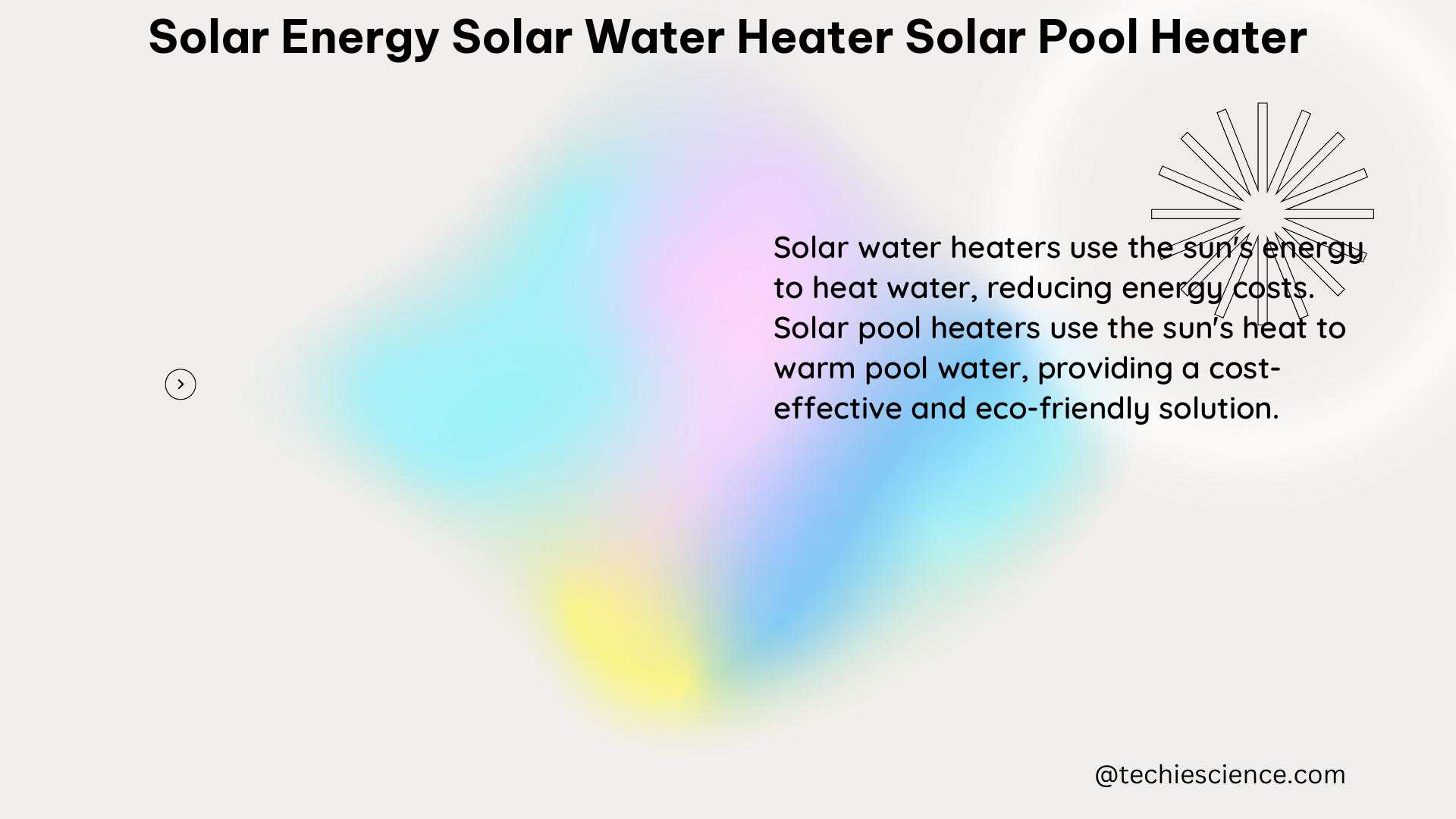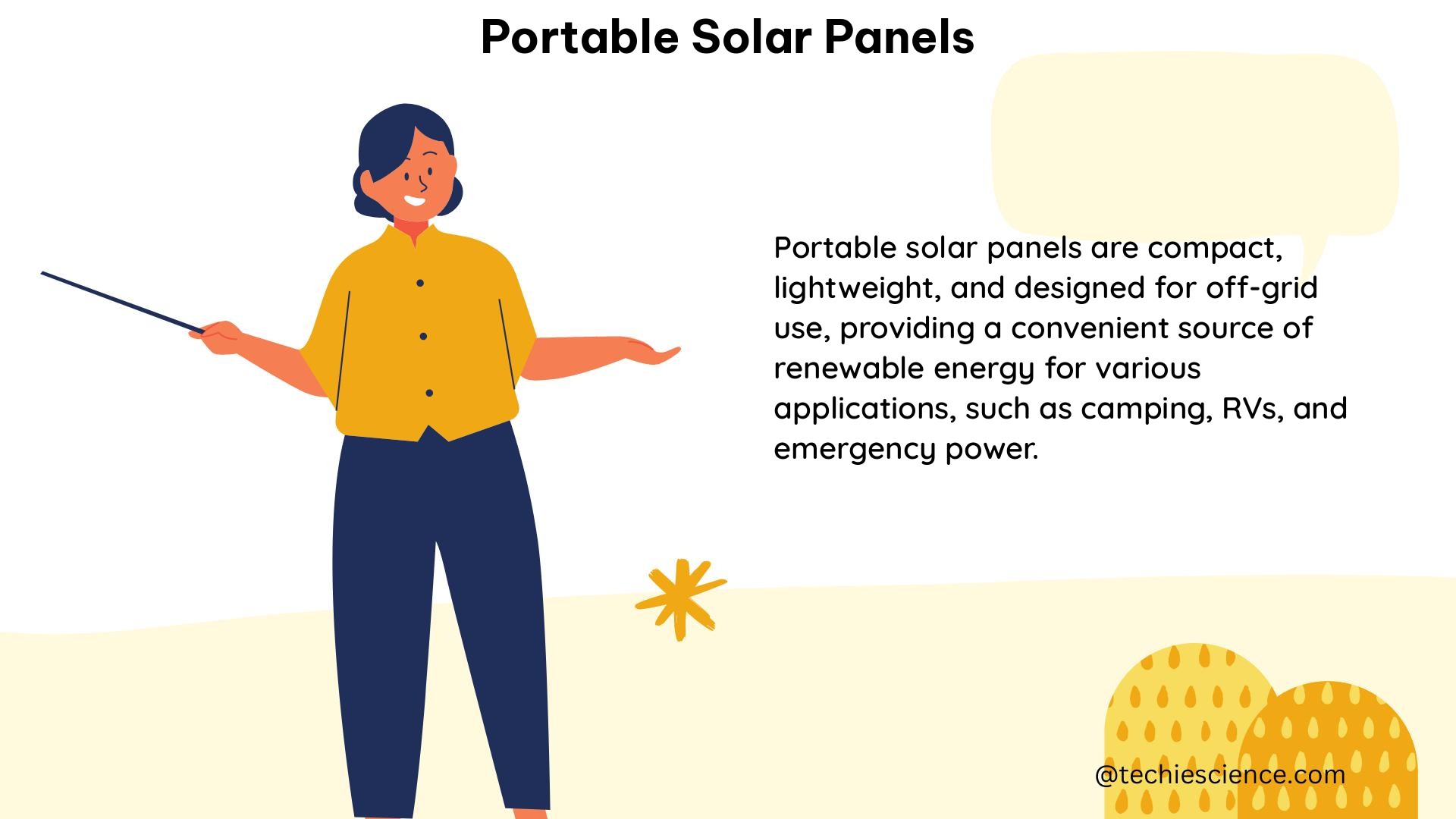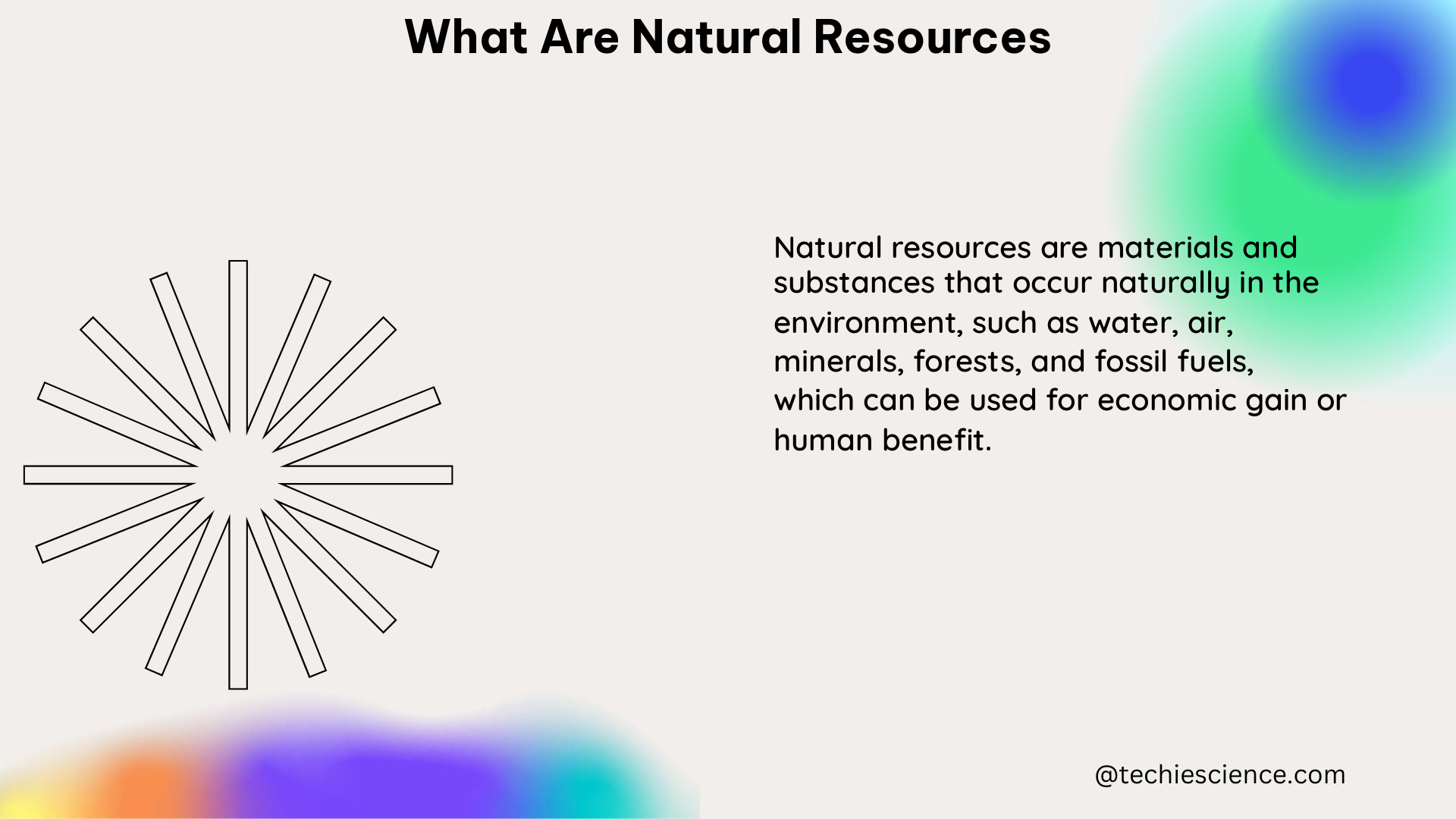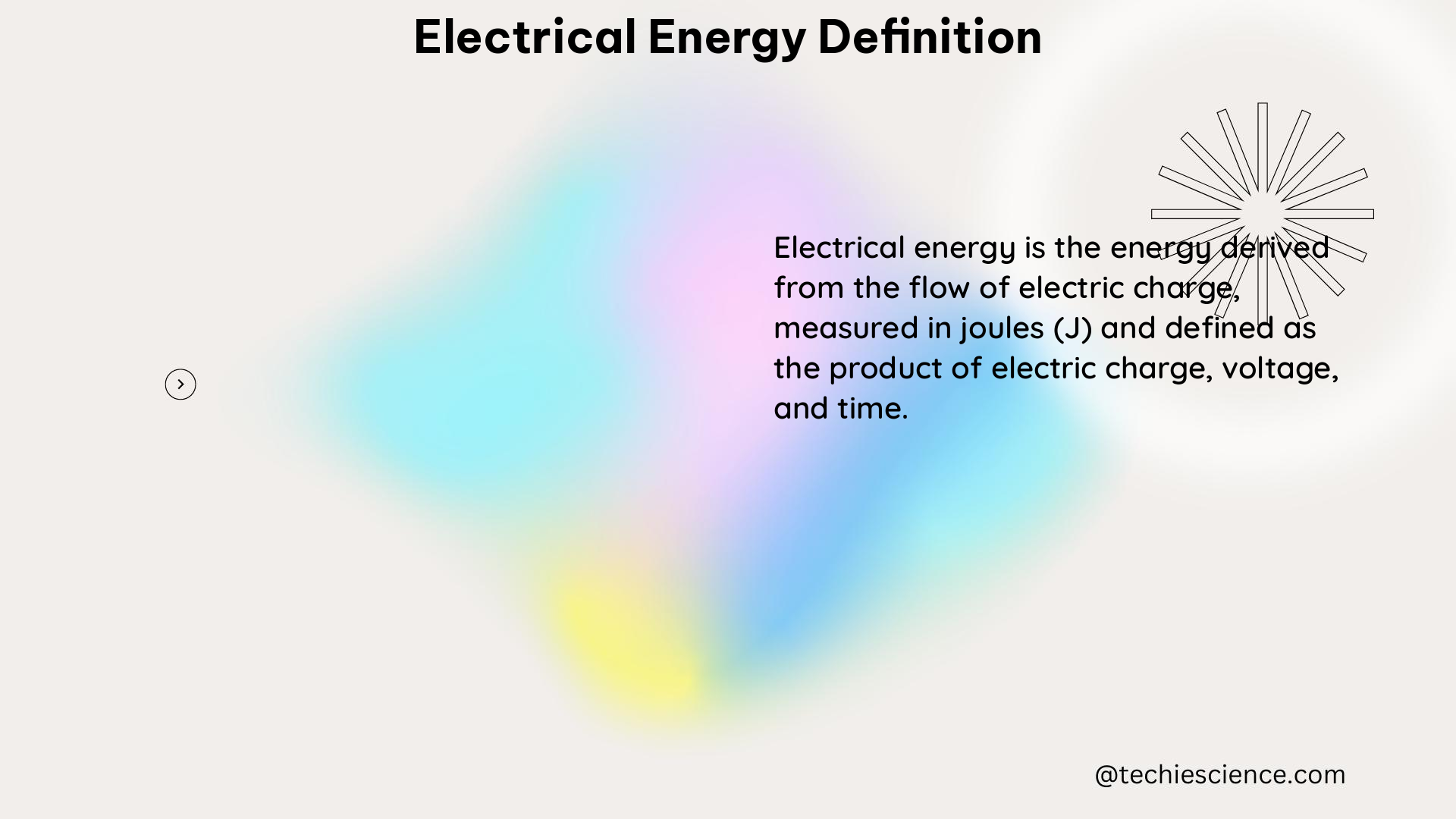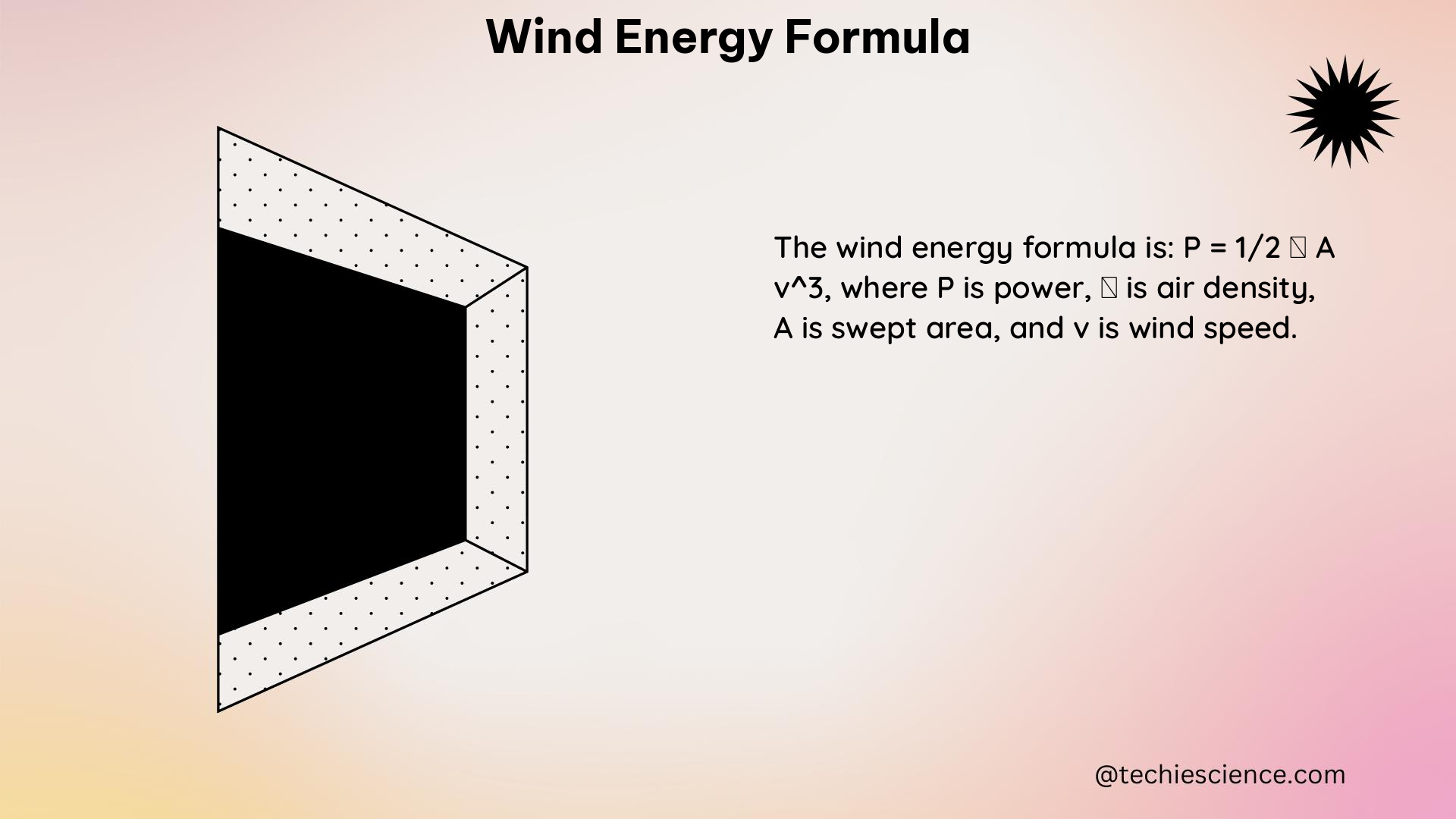Light energy is a fundamental form of electromagnetic radiation that plays a crucial role in various aspects of our daily lives, from illumination and photosynthesis to medical applications and solar power generation. This comprehensive guide delves into the technical details, examples, and practical uses of light energy, providing a valuable resource for physics students and enthusiasts.
Examples of Light Energy
Sunlight
Sunlight is the most abundant natural source of light energy, with an intensity of approximately 1,368 watts per square meter (W/m²) at the Earth’s surface. This energy is the result of nuclear fusion reactions occurring in the Sun, where hydrogen atoms are converted into helium, releasing vast amounts of energy in the form of electromagnetic radiation.
The solar spectrum encompasses a wide range of wavelengths, from ultraviolet (UV) to infrared (IR), with the visible spectrum (380 nm to 740 nm) being the most familiar to the human eye. The intensity and spectral distribution of sunlight can vary depending on factors such as time of day, weather conditions, and atmospheric composition.
Incandescent Lightbulbs
Incandescent lightbulbs are a common example of artificial light energy sources. These bulbs emit light through the heating of a filament, typically made of tungsten, which is heated to high temperatures by an electric current. Incandescent bulbs have a typical power consumption of 60-100 watts and an efficiency of around 2-5 lumens per watt, meaning that a significant portion of the input energy is converted into heat rather than light.
The light produced by incandescent bulbs is characterized by a continuous spectrum, with a warm, yellowish-white color temperature. This type of lighting has been gradually replaced by more energy-efficient alternatives, such as LED and compact fluorescent lamps (CFLs), due to their lower energy consumption and longer lifespan.
Lasers
Lasers are high-intensity light energy sources that produce coherent, monochromatic light through the process of stimulated emission. Laser light is characterized by its high directionality, monochromaticity, and coherence, which make it useful in a wide range of applications, including:
- Material processing: Lasers can be used for cutting, welding, and drilling materials with high precision.
- Medical procedures: Lasers are employed in various medical treatments, such as laser surgery, photodynamic therapy, and laser hair removal.
- Telecommunications: Fiber-optic communication systems rely on laser light to transmit data over long distances with high bandwidth.
- Scientific research: Lasers are essential tools in fields like spectroscopy, interferometry, and laser cooling.
The specific characteristics of a laser, such as wavelength, power, and beam quality, are determined by the design and construction of the laser device.
Photovoltaic Cells
Photovoltaic (PV) cells, also known as solar cells, are devices that convert light energy into electrical energy through the photovoltaic effect. When photons from sunlight or other light sources strike the surface of a PV cell, they can excite electrons within the semiconductor material, causing them to flow and generate an electric current.
The efficiency of photovoltaic cells in converting light energy into electrical energy varies depending on the technology used, with typical efficiencies ranging from 15% to 22%. Factors such as the semiconductor material, cell design, and environmental conditions can all influence the performance of PV cells.
Photovoltaic systems, consisting of arrays of PV cells, are widely used for solar power generation, providing a renewable and sustainable source of electricity.
Uses of Light Energy
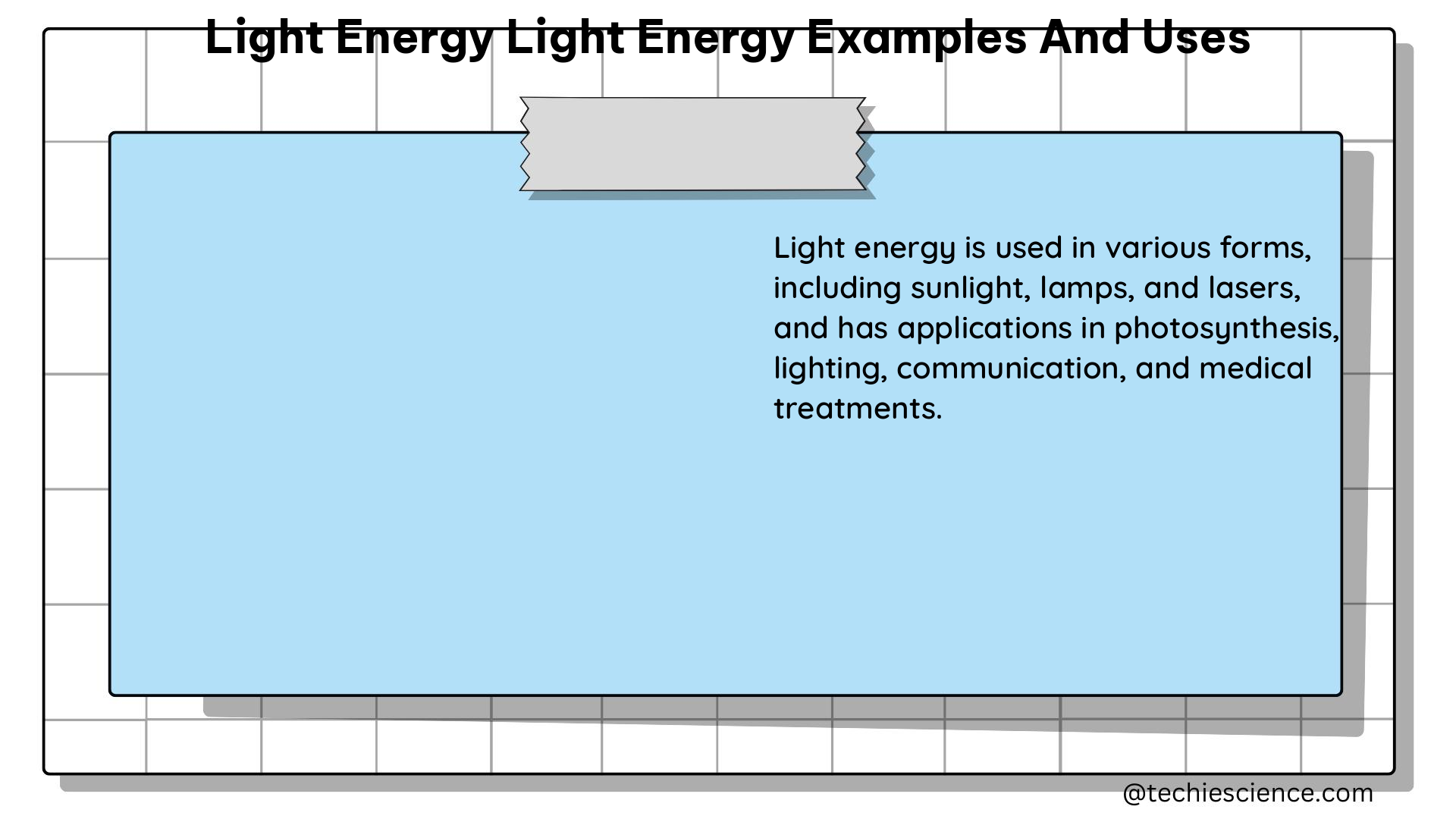
Illumination
One of the most widespread uses of light energy is for illumination, where it is used to light up homes, offices, streets, and outdoor spaces. The global energy consumption for lighting was estimated to be around 2,900 terawatt-hours (TWh) in 2020, highlighting the significant role of light energy in our daily lives.
The intensity of illumination is measured in lux (lx), which represents the luminous flux per unit area. For example, a typical office environment may have an illuminance of 300-500 lx, while a well-lit street may have an illuminance of 10-30 lx.
Photosynthesis
Light energy plays a crucial role in the process of photosynthesis, where plants and some other organisms use the energy from sunlight to convert carbon dioxide and water into glucose and oxygen. This process is essential for the sustenance of life on Earth, as it provides the primary source of energy for most living organisms.
The estimated amount of light energy absorbed annually for photosynthesis is around 100-150 TWh, highlighting the significant impact of light energy on the global ecosystem.
Photography
Light energy is the fundamental component in the process of photography, where it is used to expose photosensitive materials, such as film or digital sensors, to create images. The interaction between light and the photosensitive material, combined with the optical properties of the camera lens, allows for the capture and recording of visual information.
The wavelength and intensity of the light, as well as the exposure time, are critical factors in determining the quality and characteristics of the resulting photograph.
Solar Power Generation
The conversion of light energy into electrical energy through the use of photovoltaic cells is a rapidly growing field of renewable energy. Solar power generation has seen a significant increase in global installed capacity, reaching over 720 gigawatts (GW) as of 2022.
Photovoltaic systems harness the energy of sunlight to generate electricity, with the efficiency of the conversion process ranging from 15% to 22% depending on the technology used. This renewable energy source has become increasingly important in the global effort to reduce greenhouse gas emissions and mitigate the effects of climate change.
Medical Applications
Light energy has found various applications in the medical field, including:
- Laser surgery: High-intensity laser beams are used for precise and minimally invasive surgical procedures, such as eye surgery, tumor removal, and tissue ablation.
- Phototherapy: Low-intensity light, often in the red or near-infrared spectrum, is used to treat certain skin conditions, seasonal affective disorder, and other medical conditions.
- Cancer treatment: Photodynamic therapy (PDT) uses light-sensitive drugs and light energy to selectively destroy cancer cells.
The unique properties of light, such as its directionality, wavelength, and intensity, make it a valuable tool in modern medical practices.
Technical Specifications and Measurements
Speed of Light
The speed of light in a vacuum is a fundamental constant in physics, with a value of approximately 300,000 kilometers per second (km/s) or 186,282 miles per second (mi/s). This speed is denoted by the symbol “c” and is a crucial parameter in the study of electromagnetic radiation, including light energy.
Luminous Intensity
Luminous intensity is a measure of the amount of light emitted by a source in a particular direction, and it is measured in candelas (cd). One candela is defined as the luminous intensity of a normal candle, which serves as a reference point for this unit.
Illuminance
Illuminance is a measure of the amount of light falling on a surface, and it is measured in lux (lx). One lux is defined as the illuminance of a surface that is one meter away from a light source emitting one candela.
Energy Density
The energy density of light is measured in joules per square meter (J/m²). The energy density of sunlight at the Earth’s surface is approximately 1,368 J/m².
Wavelength
The wavelength of light is the distance between two consecutive peaks or troughs in the electromagnetic wave. The visible spectrum of light ranges from approximately 380 nanometers (nm) for violet light to 740 nm for red light.
Theoretical Explanation
Light energy is a form of electromagnetic radiation that can be described by both wave and particle theories. The wave theory explains the propagation of light through space, while the particle theory (photons) explains the interaction of light with matter.
The energy of light is directly proportional to its frequency and inversely proportional to its wavelength, as described by the equation:
[E = hf = \frac{hc}{\lambda}]
where:
– (E) is the energy of the light
– (h) is Planck’s constant (6.626 × 10^-34 J⋅s)
– (f) is the frequency of the light
– (c) is the speed of light (3 × 10^8 m/s)
– (\lambda) is the wavelength of the light
This equation demonstrates the fundamental relationship between the energy, frequency, and wavelength of light, which is crucial in understanding the behavior and applications of light energy.
References
- enDAQ Blog. (n.d.). Light Sensors: Units, Uses, and How They Work. Retrieved from https://blog.endaq.com/how-light-sensors-work
- CLEAN. (2013). Energy is a Physical Quantity. Retrieved from https://cleanet.org/clean/literacy/energy1.html
- Turito. (2022). Light Energy – Types, Properties and Uses. Retrieved from https://www.turito.com/blog/physics/light-energy
- Quora. (2015). What are the uses of light energy? Retrieved from https://www.quora.com/What-are-the-uses-of-light-energy
- GeeksforGeeks. (2024). Real Life Applications of Light Energy. Retrieved from https://www.geeksforgeeks.org/real-life-applications-of-light-energy/
